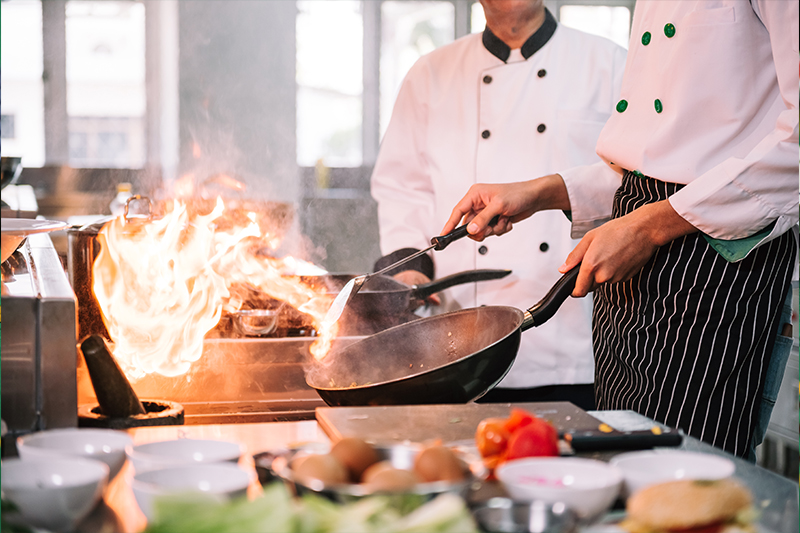Author: Kaya Stanley
In an industry known for its tight margins and high operational risks, the choice of workers’ compensation model can significantly impact the business’s financial health and its employees’ wellbeing. With options ranging from traditional insurance policies to self-insurance models, understanding the differences and implications of each choice becomes critical for informed decision-making. It’s important to know the differences to make the best choice.
“Understanding workers’ compensation is key for restaurant owners. It’s more than a rule to follow; it’s a smart business decision.”
Understanding the Traditional Insurance Model
The traditional insurance model operates on a foundational principle where restaurant owners’ premiums and those from various other industries are pooled together. This pool covers claims from across a diverse spectrum of businesses. This money is used to pay for any accidents or injuries at work. The model’s simplicity and common use have long made it the go-to option for many in the restaurant industry, but its one-size-fits-all approach often overlooks the unique risks and needs specific to food service operations.
At its core, this model can be likened to a casino game, where the odds are designed to favor the house, in this case, the insurance company. Premiums collected from policyholders are not merely set aside for claim payouts but actively invested in various investments. The aim here is to generate substantial returns, thereby maximizing profits for the company’s shareholders. The business model of these insurance companies hinges on a delicate balance: the revenues earned from investments must significantly outweigh the expenses of claim payouts and operational overheads. This structure focuses on making money for the insurance company over the specific needs of policyholders, including restaurant owners.
For restaurant owners, this can be a problem. First, the premium rates are often influenced by broader market trends and the overall claims experience across multiple industries, not just the restaurant sector. This means that a restaurant with a good safety record and low claim rates might still pay higher premiums due to adverse trends in unrelated sectors.
Additionally, traditional insurance policies might not offer the flexibility needed to address the unique risks associated with running a restaurant. For instance, risks like kitchen fires, foodborne illness outbreaks, or customer injuries require specific risk management strategies, which generic insurance policies may not fully cover. This lack of customization can leave restaurant owners either underinsured for some risks or overpaying for coverages that are irrelevant to their specific operations.
While traditional insurance offers a straightforward approach to workers’ compensation, its broad-brush strategy might not be the most cost-effective or protective option for restaurant owners. It’s a model that necessitates careful consideration, particularly in an industry where the risks are as unique and diverse as the culinary delights on offer.
The Emergence of Self-Insured Groups in the Restaurant Sector
Self-Insured Groups (SIGs) present a shift in managing workers’ compensation, offering a more tailored and collaborative approach. In this model, businesses within the same industry, such as restaurants, pool their resources to cover workers’ compensation claims. This collective approach allows for a degree of customization and control over risk management that traditional insurance cannot match. CRMBC (California Restaurant Mutual Benefit Corporation) exemplifies this model’s success, demonstrating how industry-specific risk pooling can improve claims outcomes, cost savings, and enhanced control over insurance processes.
Comparing High Deductible Plans and SIGs
High Deductible Plans are an alternative where the employer assumes a higher risk in exchange for lower premiums. This option might seem attractive for well-established restaurants with solid financial foundations. However, the potential financial strain of covering high deductibles in the event of significant claims cannot be overlooked.
On the other hand, SIGs offer a shared risk environment, which can be particularly beneficial for the restaurant industry. Members of a SIG like CRMBC benefit from industry-specific risk management strategies, collective bargaining power, and shared insights, leading to potentially lower overall costs and enhanced claims management.
“Members of a Self-Insured Group like CRMBC benefit from collective bargaining power and shared insights, leading to potentially lower costs and enhanced claims management in the restaurant industry.”
Making an Informed Choice
Restaurant owners should carefully consider the decision between traditional insurance, high deductible plans, and SIGs. This choice should factor in the business’s financial stability, risk tolerance, and the nature of its operations. In restaurants’ dynamic and risk-prone world, a well-chosen workers’ compensation strategy is crucial for long-term success and sustainability.
Navigating workers’ compensation in the restaurant industry requires more than just compliance; it demands strategy and a deep understanding of the available options. Whether it’s traditional insurance, high deductible plans, or a self-insured group like CRMBC, the choice made by restaurant owners can have far-reaching implications on their business’s financial and operational health. By carefully weighing these options, restaurateurs can ensure they meet their legal obligations and improve their worker safety and financial management approach.
To learn more about your options and find a workers’ compensation plan that fits your restaurant, contact CRMBC at 559-558-4800 or email info@crmbc.com

Kaya Stanley is an attorney, published author, business owner, and highly sought-after strategic turnaround expert. Ms. Stanley serves as CEO and Chairman of the Board for CRMBC, the largest restaurant workers’ compensation self-insured group in California, and she is the Licensee for TEDxReno, an independently organized TEDx Event.
Throughout her 22 years of practicing law, Ms. Stanley has served as outside counsel for Wal-Mart and Home Depot. She was voted one of the country’s “Top 25 OZ Attorneys” by Opportunity Zone Magazine and published a best-selling book called “The Employer’s Guide to Obamacare.” Before that, she earned her master’s degree in social work and public policy, after which she worked with at-risk girls in Detroit and lobbied for women and families.





